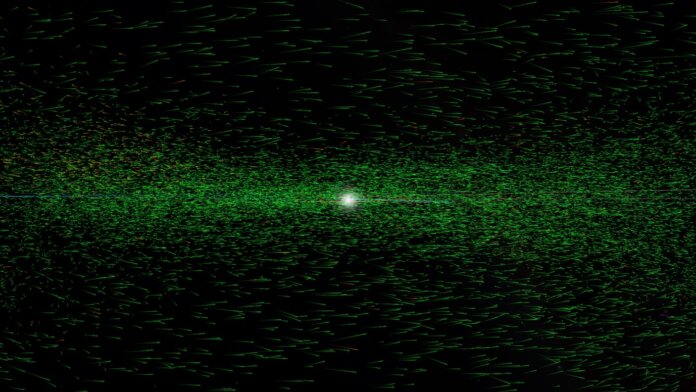There are well over a million asteroids in the solar system. Most don’t cross paths with Earth, but some do and there’s a risk one of these will collide with our planet. Taking a census of nearby space rocks, then, is prudent. As conventional wisdom would have it, we’ll need lots of telescopes, time, and teams of astronomers to find them.
But maybe not, according to the B612 Foundation’s Asteroid Institute.
In tandem with Google Cloud, the Asteroid Institute recently announced they’ve spotted 27,500 new asteroids—more than all discoveries worldwide last year—without requiring a single new observation. Instead, over a period of just a few weeks, the team used new software to scour 1.7 billion points of light in some 400,000 images taken over seven years and archived by the National Optical-Infrared Astronomy Research Laboratory (NOIRLab).
To discover new asteroids, astronomers usually need multiple images over several nights (or more) to find moving objects and calculate their orbits. This means they have to make new observations with asteroid discovery in mind. There is also, however, a trove of existing one-time observations made for other purposes, and these are likely packed with photobombing asteroids. But identifying them is difficult and computationally intensive.
Working with the University of Washington, the Asteroid Institute team developed an algorithm, Tracklet-less Heliocentric Orbit Recovery, or THOR, to scan archived images recorded at different times or even by different telescopes. The tool can tell if moving points of light recorded in separate images are the same object. Many of these will be asteroids.
Running THOR on Google Cloud, the team scoured the NOIRLab data and found plenty. Most of the new asteroids are in the main asteroid belt, but more than 100 are near-Earth asteroids. Though the team classified their findings as “high-confidence,” these near-Earth asteroids have not yet been confirmed. They’ll submit their findings to the Minor Planet Center, and ESA and NASA will then verify orbits and assess risk. (The team says they have no reason to believe any pose a risk to Earth.)
While the new software could speed up the pace of discovery, the process still requires volunteers and scientists to manually review the algorithm’s finds. The team plans to use the raw data from the recent run including human review to train an AI model. The hope is that some or all of the manual review process can be automated, making the process even faster.
In the future, the algorithm will go to work on data from the Vera C. Rubin Observatory, a telescope in Chile’s Atacama desert. The telescope, set to begin operations next year, will make twice nightly observations of the sky with asteroid detection in mind. THOR may be able to make discoveries with only one nightly run, freeing the telescope up for other work.
All this is in service of the plan to discover as many Earth-crossing asteroids as possible.
According to NASA, we’ve found over 1.3 million asteroids, 35,000 of which are near-Earth asteroids. Of these, over 90 percent of the biggest and most dangerous—in the same class as the impact that ended the dinosaurs—have been discovered. Scientists are now filling out the list of smaller but still dangerous asteroids. The vast majority of all known asteroids were catalogued this century. Before that we were flying blind.
While no dangerous asteroids are known to be headed our way soon, space agencies are working on a plan of action—sans nukes and Bruce Willis—should we discover one.
In 2022, NASA rammed the DART spacecraft into an asteroid, Dymorphos, to see if it would deflect the space rock’s orbit. This is a planetary defense strategy known as a “kinetic impactor.” Scientists thought DART might change the asteroid’s orbit by 7 minutes. Instead, DART changed Dymorphos’ orbit by a whopping 33 minutes, much of which was due to recoil produced by a giant plume of material ejected by the impact.
The conclusion of scientists studying the aftermath? “Kinetic impactor technology is a viable technique to potentially defend Earth if necessary.” With the caveat: If we have enough time. Such impacts amount to a nudge, so we need years of advance notice.
Algorithms like THOR could help give us that crucial heads up.
Image Credit: B612 Foundation



